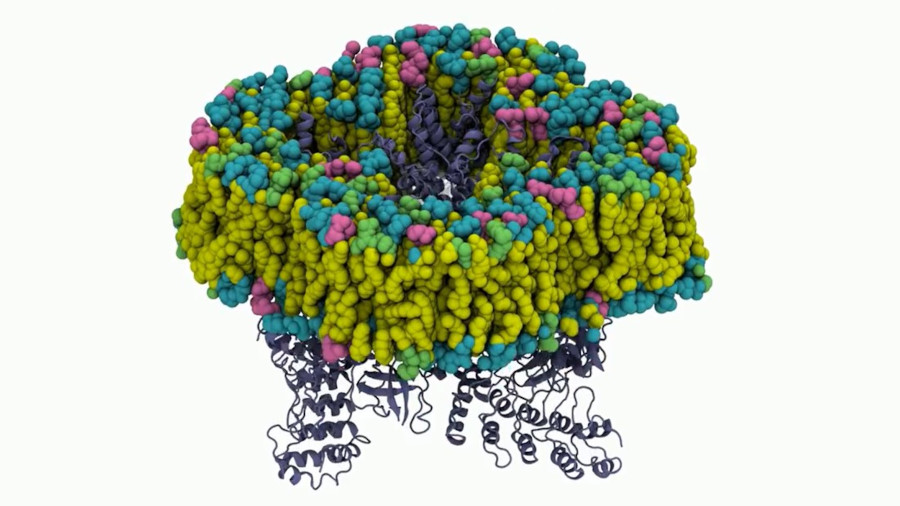New therapeutic approaches for hypertension through TRPV2 proteins
Researchers at the UAB have carried out two revealing studies on TRPV2, a key ion channel in several cellular functions, which points to it as a possible new therapeutic target in the treatment of hypertension. On the one hand, they have discovered the vessel-dilating effects of its activation and, on the other, they have identified a molecule capable of activating it in a more potent way than the drugs known to date.

The TRPV2 ion channel is formed by proteins in the membrane of some cells. When activated, they allow the entry of positive ions from the extracellular environment, changing the state of the cell and temporarily modifying aspects such as its ability to replicate, contract (in the case of a muscle cell) or even causing its death.
TRPV2 are important in cardiac and neuromuscular function, immunity and metabolism, and are associated with pathologies such as muscular dystrophy and cancer. However, their ability to interact with other molecules is still largely unknown.
Now, in two studies led by researchers from the Department of Pharmacology, Therapeutics and Toxicology, the Department of Biochemistry and Molecular Biology and the Institut de Neurociències of the UAB, these proteins have been studied in depth.
In a first study, coordinated by Dr. Francesc Jiménez-Altayó and published in the journal Life Sciences, the mechanisms involved in the contraction and relaxation of blood vessels by TRPV2 activation were analyzed in male mice. The researchers saw that TRPV2 produces multiple effects in different layers of the blood vessel, resulting in vasodilation.
"This is important because it is the first time that the processes triggered by the activation of TRPV2 in blood vessels have been identified and have been described as leading to their dilation. This study represents a very important starting point for using this TRPV2 activation as a therapeutic strategy against diseases that cause excessive vasoconstriction, such as hypertension," explains Dr. Jiménez-Altayó.
In a second study coordinated by Dr. Álex Perálvarez-Marín, published in the Computational and Structural Biotechnology Journal, the research group used computational techniques (in silico analysis) to identify a set of 270 molecules that, due to their physical and chemical characteristics, could interact with TRPV2, and grouped them by families according to how each of these molecules would bind to TRPV2. Then, by expressing the TRPV2 protein in yeast, a screening system was designed to test its effects. This made it possible to find a molecule (4-piperidin-1-sulfonyl-benzoic acid) capable of activating this protein more powerfully than the only drug known so far to do so: probenecid.
"The activation of TRPV2 produced by the new molecule identified in this study has a very interesting vasodilator effect that could be used in the future as an antihypertensive therapy. Furthermore, an effect linked to the sex of the mice has been observed, which opens the door to a therapy adjusted and personalized to each patient, especially due to the fact of sex bias in the prescription of drugs. Evidently, further studies will have to be carried out to determine the possible viability and commercialization of the molecule as a drug," concludes Dr. Perálvarez-Marín.
References:
Perálvarez-Marín A, Solé M, Serrano J, Taddeucci A, Pérez B, Penas C, Manich G, Jiménez M, D'Ocon P, Jiménez-Altayó F. Evidence for the involvement of TRPV2 channels in the modulation of vascular tone in the mouse aorta. Life Sci. 2024 Jan 1;336:122286. doi: 10.1016/j.lfs.2023.122286. Epub 2023 Nov 24. PMID: 38007144. https://pubmed.ncbi.nlm.nih.gov/38007144/
Catalina-Hernández È, López-Martín M, Masnou-Sánchez D, Martins M, Lorenz-Fonfria VA, Jiménez-Altayó F, Hellmich UA, Inada H, Alcaraz A, Furutani Y, Nonell-Canals A, Vázquez-Ibar JL, Domene C, Gaudet R, Perálvarez-Marín A. Experimental and computational biophysics to identify vasodilator drugs targeted at TRPV2 using agonists based on the probenecid scaffold. Comput Struct Biotechnol J. 2023 Dec 29;23:473-482. doi: 10.1016/j.csbj.2023.12.028. PMID: 38261868; PMCID: PMC10796807. https://pubmed.ncbi.nlm.nih.gov/38261868/
The UAB, with Sustainable Development Goals
Good health and well-being